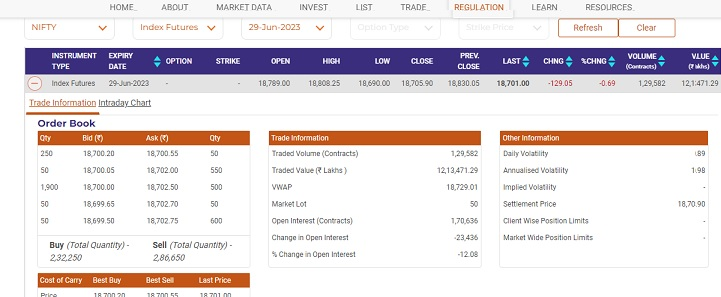In this article, we will discuss
What is Open Interest?
Open Interest tells you how many derivatives contracts – both options and futures contracts are currently outstanding or open in the market. These are positions that are active and not closed by the traders or investors. When the trader or investor exercises their option the position is said to be closed. For Example: When seller A sells 1 contract to buyer B. The buyer is said to be long on the contract and the seller is said to be short on the same contract. The open interest, in this case, will therefore be 1. Open interest covers all the trades that were opened (whether buy or sell) during the day and when the trader closes his position it gets subtracted. For Eg: There are 3 traders in the market- A, B and C who are trading in the same futures contract. If A buys 1 contract open interest increases by 1. B buys 5 contracts. Now open interest is (1 + 5= 6) on the long side. C decides to sell 4 contracts now open interest would be (6 long and 4 short =10). Next day if A sells 1 contract then open interest would reduce to nine. When B also sells 5 contracts open interest would fall to 4. Unless C decides to buyback 4 contracts open interest would remain at 4 otherwise it would fall to zero. The difference between volume and open interest is that, the volume includes all contracts that were traded in the market during the day while open interest is all the open positions in the market. Open interest is not the total of both buy and sell trades. For Example: In any given day, A who holds 1 futures contract decides to sell it to B, then it leads to no change in the open interest while the volume would increase by 1 contract. If share is simply transferred from one person to another then no new contract is created in the market and therefore there will be no change in the open interest position. Open interest helps to understand the cash flow in the market. An increase in open interest indicates more money flowing into future contracts and is usually a bullish sign; when open interest falls, money flows out of the futures contract. It can also be used to analyse the trend in the market. When open interest is increasing it means more traders/investors are taking positions in the market indicating the strengthening of the current trend. On the other hand, when the open interest is decreasing and more traders/investors are closing their position, and could mean that the current trend in price is ending. The number of outstanding derivatives contracts varies on a day-to-day basis. In the below screen shot we can see that, as of 23rd June 2023, OI on Nifty futures is roughly 1.7 lakh meaning there are 1.7 lakh Long as well as short Nifty positions. About 12% contracts were squared off today. Once future contract reaches closer to its expiry its open interest decreases and it increases for the next futures contract. Open interest increases over the life of the futures contract.
One needs to look at OI along with prices to arrive at the right conclusion. OI gives a sense of bullish and bearish positions. The following tables explains the trader’s perspective with respect to changes in the OI and prices –
Once future contract reaches closer to its expiry its open interest decreases and it increases for the next futures contract. Open interest increases over the life of the futures contract.
One needs to look at OI along with prices to arrive at the right conclusion. OI gives a sense of bullish and bearish positions. The following tables explains the trader’s perspective with respect to changes in the OI and prices –
Positional Built-up Table:
| Price | Open Interest | Interpretation |
| Increase in price | Increase in OI | Long built-up: Inflow of money and continuation of uptrend |
| Increase in price | Decrease in OI | Short covering: Shorts covering their position |
| Decrease in price | Increase in OI | Short built-up: More short positions and weakness expected |
| Decrease in price | Decrease in OI | Long unwinding: Longs are covering their position |



 Easy & quick
Easy & quick
Leave A Comment?